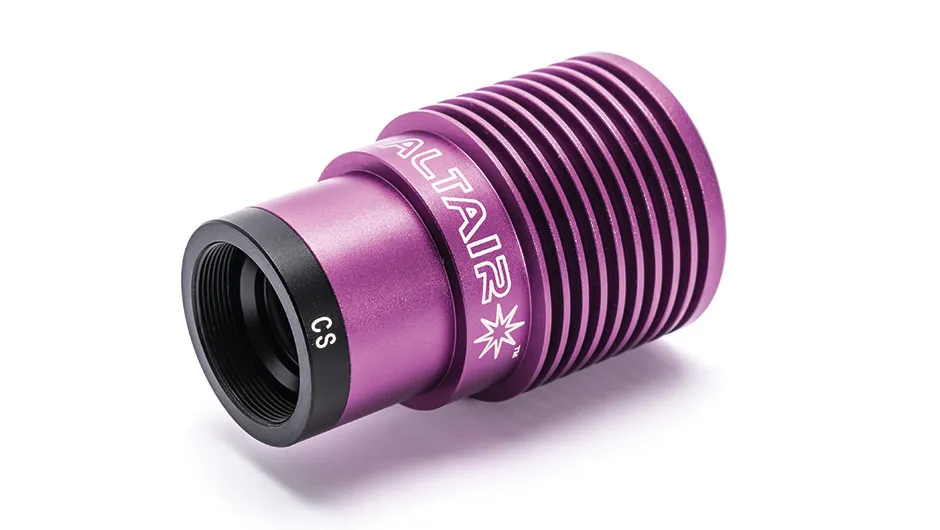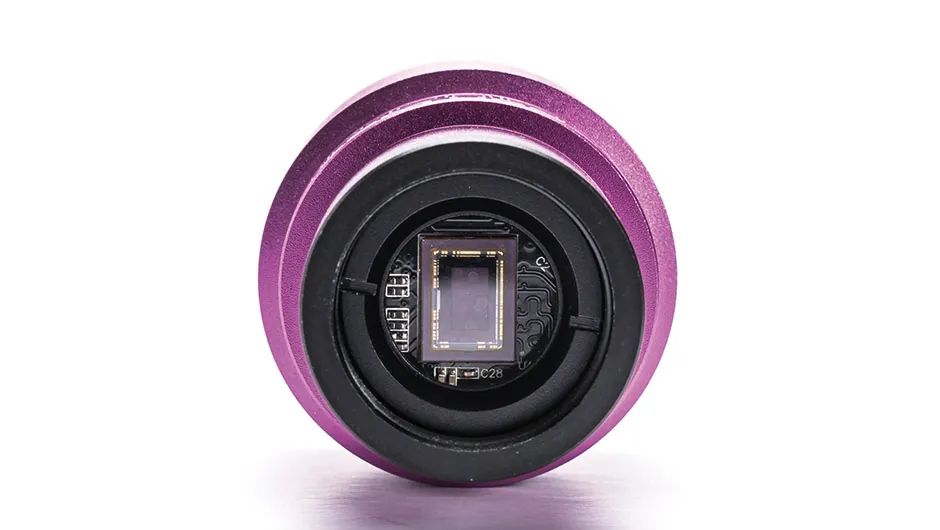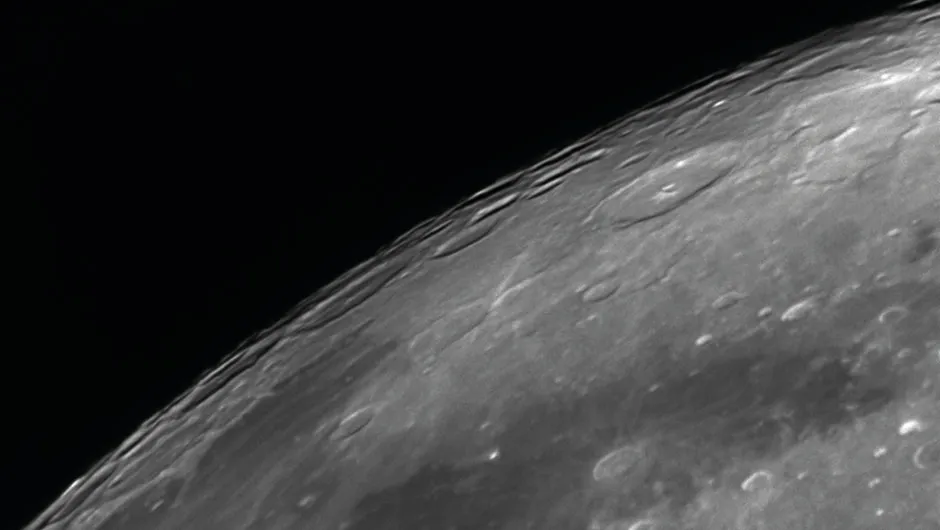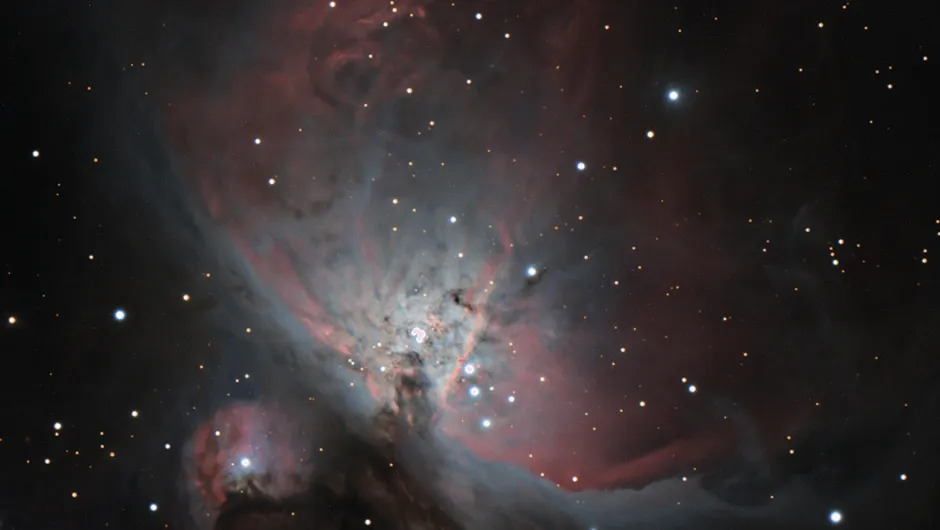Price: £329.00
Weight: 80g
Supplier: Altair Astro
Telephone: 01263 731505
Website: www.altairastro.com
Altair Astro has completely redesigned its GP-CAM 290M Mono camera.
As well as USB3 compatibility this new model also has a larger body, partly to house the new electronics inside but also to accommodate the deeper external fins to help cooling.
Also on the rear is an ST4 guide port.
The camera window is clear glass but you can get an IR-coated window as an optional extra.
Free software is included with the camera but has to be downloaded from cameras.altairastro.com.
Once it’s installed and connected, a red LED flashes on the body of the camera to say it’s active.
Impressive detail
The 290M USB3 has a wide range of uses from high-speed planetary to deep-sky and electronically assisted astronomy imaging.
We initially set the camera up for some solar imaging using a 100mm Lunt telescope and the first thing we noticed is how close objects appear on the screen in relation to the aperture of the telescope.

To get the best from the camera a little time and patience is required in order to correctly adjust its settings, including USB speed and bit depth.
The camera didn’t drop any frames on the videos we recorded with it running at 125fps and there was some nice fine detail in the solar prominence we captured.
Using the camera with SharpCap Pro software (from cameras.altairastro.com) opens up more options for solar and lunar imaging, such as the ability to subtract flat frames while you’re recording video and capturing still frames.
Next we set the camera up for some lunar imaging using a Celestron 11-inch Edge telescope and again, we were very pleased with the detail the camera was able to capture.
The view on screen was smooth with no noticeable loss on the display.
This makes the camera ideal for live viewing at outreach events and meetings.
Detail in and around the lunar craters was crisp with a nice contrast between the dark and light areas.
With the histogram set to 70 in SharpCap Pro every video was consistent in quality when processed.
This will make lunar and solar mosaics a breeze to construct.
We also tried the camera with a Daystar Quark filter and were rewarded with some stunning shots of groups of sunspots.

Imaging and guiding
Deep-sky imaging is easy but you have to make some changes to the settings for good results.
For cameras that aren’t actively cooled, such as this one, it’s becoming popular to take lots of short exposures instead of a single long exposure.
With the 290M USB3 you can choose to run 60 to 100x20-second images and doing so on some equipment would mean that you wouldn’t have to use autoguiding software.
Due to poor weather during the test period we didn’t get many clear nights to try the camera with narrowband filters, but we did get a short amount of time to image in RGB with the camera set on a filter wheel.
Focusing is easy using a Bahtinov mask, as is adjusting the gain up to brighten the image.
For best results the camera needs to be set to high bit mode in whatever software you’re using and the gain needs to
be set low for image capture.
If the gain is set high, images captured will be noisy and hard to calibrate.
The 20-second images we produced with it showed no ampglow and the detail in the images captured was very good for such a short exposure time.
With the chip being so sensitive it’s very easy to capture faint objects.
Using the camera for autoguiding is simple once you’ve connected it to a mount using the built-in ST4 port and supplied cable.
Setting it up using PHD2 guiding software is easy and the camera’s sensitivity makes guiding on faint objects, such as comets, simple to do.
In short, this is an impressive camera: it’s well specced, highly capable and user friendly; all this combined with its price makes it a very tempting piece of kit.

Outstanding feature: Capable and proficient
The GP-CAM USB3 290M Mono is an excellent all-round camera for a relatively modest price.
Having a camera that can image most objects in the night sky and even the daytime (with the appropriate safety filter) is ideal.
The camera is suitable for all levels of ability from a beginner to advanced imager, as it has something for everyone.
Being able to get close up on targets with modest equipment is always desirable and makes a pleasant change from having to use large-aperture equipment all the time.
The list of things it can do is long: it has excellent sensitivity; a fast frame rate; gives detailed live-view images; and can image the deep-sky and autoguide to mention just a few of the highlights.
Using software such as SharpCap Pro increases the camera’s applications even further: options include the polar-alignment and sky background measurement tool to help you get the perfect settings for deep-sky imaging.
Excellent build quality on top of all of this means there really isn’t anything we didn’t like about this camera.

USB port
The 290M features a dual USB3 port.
Using the included USB3 lead makes high-speed frame transfer easy.
For deep-sky imaging the socket includes a USB2 interface that allows for longer cables and USB hubs to be used giving great flexibility of use.
Guide port
An ST4 guide port on the back of the camera allows it to be used for guiding with popular software such as PHD1 and 2.
Ascom drivers are downloadable from cameras.altairastro.com.
With the camera being so light, it can be attached to lots of different guiding setups.
Camera body
A high-quality aluminium body with an attractive anodised coating not only makes the camera look good, but also makes it durable.
With the new enlarged body, the cooling fins now catch more air to keep the camera’s temperature stable, which is useful for long-exposure imaging and reducing thermal noise.
Sensor
With over 120fps, minimal ampglow and high sensitivity to low light, the Sony IMX CMOS Chip packs lots for the price.
The 1,920x1,080 array with a pixel size of 2.9um allows for close-up imaging with small-aperture equipment.
The region of interest options also allow the frame rate to be increased substantially.
Software
Altair’s own AltairCapture software is free to download from cameras.altairastro.com and works well for most applications.
Also included with the camera is a free license for SharpCap Pro, a popular choice among imagers with many more options to take advantage of the camera’s capabilities.
This review originally appeared in the March 2018 issue of BBC Sky at Night Magazine